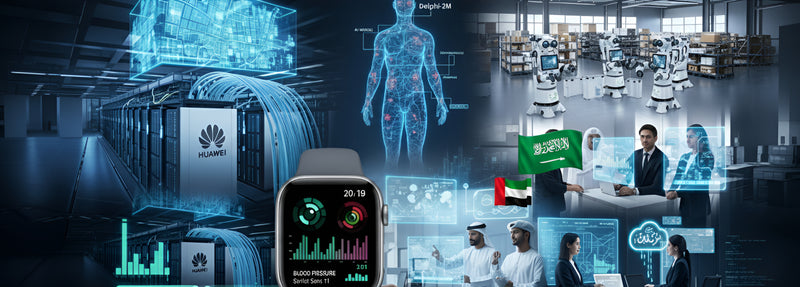
AI Marketplace Daily Digest: Top AI News for September 19, 2025
Added by MUNEER Al Wafaa on Sep 19, 2025
Welcome to the “AI Marketplace Daily Digest: Top AI News for September 19, 2025.” This special edition takes a closer look at the pivotal AI breakthroughs, detailed technology launches, and global trends that are shaping the landscape for developers, businesses, and AI enthusiasts worldwide. By expanding coverage, each story delves into the real-world context, mechanisms, and profound implications of the week’s top headlines. Whether tracking smart health solutions, exploring new infrastructure, or charting the rise of sovereign AI, this edition helps innovators and entrepreneurs seize upcoming opportunities through the AI Marketplace.
1.Apple’s AI-Powered Blood Pressure Alerts in Apple Watch
Apple has set a new industry benchmark by unveiling an AI-intensive blood pressure monitoring feature in the Apple Watch Series 11. This functionality utilizes advanced machine learning models to synthesize data from heart rate, movement patterns, and historical health profiles, allowing the Watch to estimate blood pressure fluctuations without using cuffs or external sensors. The system was trained on anonymized datasets from millions of users globally, leveraging Apple’s privacy-first AI frameworks and edge computation. The update not only brings blood pressure notifications to the masses but also synchronizes with the Apple Health app, offering trend analysis and actionable suggestions on lifestyle changes.
Real-World Impact: For consumers, this means earlier hypertension detection and personalized health insights at the wrist, skipping inconvenient clinical measurements. Healthcare professionals can tap into population-level heart health trends, potentially driving early interventions for at-risk groups.
For AI Marketplace: Developers can use similar privacy-conscious AI models, launching health monitoring apps on the marketplace that collect, analyze, and deliver tailored health analytics. Businesses venturing into wearable tech or remote patient care can find precedent-setting frameworks for scalable, compliant health applications.
2.Huawei Launches Next-Gen AI Data Centers
At its Data Center Innovation Summit, Huawei unveiled a comprehensive suite of next-generation data center technologies designed to support the explosion in AI workloads across industries. The “Unified Bus SuperPoD” architecture brings together ultra-high bandwidth interconnects and distributed AI Fabric 2.0 management, addressing bottlenecks in dense compute environments. This supports city-scale intelligent operations; in Shenzhen, Huawei’s systems now orchestrate over 100 AI-powered applications for government and industry, powering everything from traffic intelligence to emergency management.
Real-World Impact: The new, resilient data center backbone delivers unprecedented processing power for governments, financial institutions, and tech firms, enabling cloud-native AI adoption, lower latency public services, and robust digital infrastructures.
For AI Marketplace: Marketplace participants gain access to state-of-the-art infrastructure modules, reference architectures, and APIs allowing instant integration into high-availability, city-scale solutions. Ideal use cases include smart city platforms, real-time analytics, and next-gen cloud AI services, all built with enterprise-grade reliability.
3.UAE and Saudi Arabia Drive Sovereign AI at National Scale
The UAE and Saudi Arabia have positioned themselves as leaders in sovereign AI, launching major partnerships and funding initiatives to develop locally controlled AI platforms. These investments focus on building foundational language models tailored to Arabic and regional dialects, secure cloud environments, and regulatory sandboxes for AI experimentation. Both nations aim to reduce reliance on Western AI providers and foster ecosystems where local businesses can integrate AI solutions in finance, health, and education while retaining full data sovereignty.
Real-World Impact: The result is enhanced data privacy, culturally relevant AI, and new government services fitted to local society’s needs. The model is inspiring emerging economies to pursue digital independence through custom-built AI systems.
For AI Marketplace: There’s unprecedented demand for regional AI modules, data labeling services, and domain-specific large language model APIs—giving developers, researchers, and integrators clear routes to market through the AI Marketplace.
4.Generative AI’s Leap: From Language to the “World Model”
At a recent MIT symposium, industry leaders introduced the next chapter for generative AI: “world models” capable of learning from sight, sound, and movement, much like a human child. With hardware advances and simulation spaces, these systems now drive autonomous robotics able to learn tasks by demonstration and adapt with experience. Amazon Robotics and Meta revealed prototype robots using these models for pick-and-place logistics and collaborative office tasks, with initial trials showing improvement in both speed (by up to 28%) and error reduction compared to traditional rule-based systems.
Real-World Impact: Factories, e-commerce warehouses, and public institutions may soon deploy self-improving robots that combine perception and autonomous reasoning, cutting operational costs and boosting productivity.
For AI Marketplace: A new market opens for developers specializing in multimodal training APIs, robotics SDKs, and autonomous agent frameworks—each rapidly scalable through the marketplace’s platform.
5.AI Model Maps Lifetime Disease Risks to Transform Healthcare
A team of researchers has developed Delphi-2M, a transformer-based AI model trained on extensive UK Biobank and Danish health datasets to predict the progression of over 1,250 diseases across a person's lifetime. This AI system can simulate future health trajectories for up to 20 years, helping in precise prevention strategies and policy planning. The model excels at recognizing complex disease interactions and comorbidities, informed by genetics, lifestyle, and socioeconomic factors, outperforming traditional single-disease prediction tools.
Real-World Impact: This transformative capability empowers healthcare providers to tailor interventions and screenings based on personalized risk, potentially reducing late-stage disease burden and improving quality of life for aging populations worldwide.
For AI Marketplace: Developers and businesses can integrate this powerful AI into wellness apps, insurance risk modeling, and public health analytics by accessing APIs that bring sophisticated disease forecasting to new markets and personalized healthcare services.
Power Your Future with AI Marketplace
This week’s AI breakthroughs underscore not just technological progress, but the urgent need for ethical leadership, sustainability, and cultural resonance. The AI Marketplace enables innovators to seize these opportunities—offering advanced tools, vetted APIs, and a collaborative community. Explore the Developer Hub, subscribe for next week’s updates, and join conversations reshaping the future of intelligent technology and inclusive growth.
